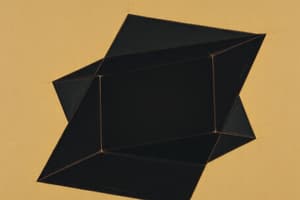Podcast
Questions and Answers
What is the purpose of a compass?
What is the purpose of a compass?
- To find midpoints
- To draw circles (correct)
- To draw lines
- To measure angles
What is a straightedge used for?
What is a straightedge used for?
- To draw circles
- To measure distances
- To draw lines (correct)
- To shade areas
What defines perpendicular lines?
What defines perpendicular lines?
Lines that intersect to form 90° angles.
What are parallel lines?
What are parallel lines?
What does it mean to bisect?
What does it mean to bisect?
What is a perpendicular bisector?
What is a perpendicular bisector?
What is an equilateral triangle?
What is an equilateral triangle?
Describe a square.
Describe a square.
What does congruent mean?
What does congruent mean?
Define rigid transformations.
Define rigid transformations.
What is a pre-image?
What is a pre-image?
What is the image in geometry?
What is the image in geometry?
What is rotation in geometry?
What is rotation in geometry?
What does reflection mean?
What does reflection mean?
Define translation in geometric terms.
Define translation in geometric terms.
What is reflection symmetry?
What is reflection symmetry?
What is rotational symmetry?
What is rotational symmetry?
What are sequences of rigid transformations used for?
What are sequences of rigid transformations used for?
Define supplementary angles.
Define supplementary angles.
What are vertical angles?
What are vertical angles?
What are corresponding angles?
What are corresponding angles?
What are alternate interior angles?
What are alternate interior angles?
What does the Triangle Angle Sum Theorem state?
What does the Triangle Angle Sum Theorem state?
What is construction in geometry?
What is construction in geometry?
Define a line segment.
Define a line segment.
What is a circle?
What is a circle?
What is a radius?
What is a radius?
What is an intersection in geometry?
What is an intersection in geometry?
Define an angle.
Define an angle.
What is a vertex?
What is a vertex?
Study Notes
Tools for Construction
- Compass: A tool for drawing circles.
- Straightedge: Used for drawing straight lines.
Types of Lines
- Perpendicular Lines: Intersect to form 90° angles.
- Parallel Lines: Never intersect.
Definitions in Geometry
- Bisect: The action of splitting an object into two equal parts.
- Perpendicular Bisector: A line that is both perpendicular to a segment and bisects it.
Geometric Figures
- Equilateral Triangle: All three sides are equal in length.
- Square: A quadrilateral featuring four equal sides and four right angles.
Congruence
- Congruent: Figures that are the same size and shape.
- Rigid Transformations: Movements that maintain the size and shape of figures.
Images and Pre-images
- Pre-image: The original figure before any transformations.
- Image: The resulting figure after transformation.
Types of Transformations
- Rotation: A turn around a fixed point, defined by center, direction, and angle.
- Reflection: A flip over a line where points are equidistant from the line.
- Translation: A slide along a directed line with specific distance and direction.
Symmetry
- Reflection Symmetry: When a figure coincides with itself upon reflection.
- Rotational Symmetry: When a figure matches its original position after a rotation.
Applications of Transformations
- Sequences of Rigid Transformations: Used to superimpose figures for proving congruence.
Angle Properties
- Supplementary Angles: Two angles on a straight line that add up to 180°.
- Vertical Angles: Opposite angles formed by two intersecting lines, congruent in measure.
- Corresponding Angles: Angles that are congruent when parallel lines are intersected by a transversal.
- Alternate Interior Angles: Congruent angles formed on opposite sides of a transversal between two parallel lines.
Triangle Properties
- Triangle Angle Sum Theorem: The sum of all interior angles of a triangle equals 180°.
Construction Methods
- Construction: The precise drawing of lines, shapes, or angles using compass and straightedge.
- Line Segment: A portion of a line defined by two endpoints.
Basic Geometry Concepts
- Circle: A shape where all points are equidistant from the center.
- Radius: The distance from the center of a circle to any point on its perimeter.
- Intersection: The point where two lines cross.
- Angle: Formed by two rays sharing a common endpoint.
- Vertex: The point where two sides of an angle or figure meet.
Studying That Suits You
Use AI to generate personalized quizzes and flashcards to suit your learning preferences.
Description
Explore key terms related to constructions and rigid transformations in geometry with these flashcards. Learn about essential tools like compass and straightedge, as well as concepts such as parallel and perpendicular lines. This quiz helps reinforce foundational geometry vocabulary.




